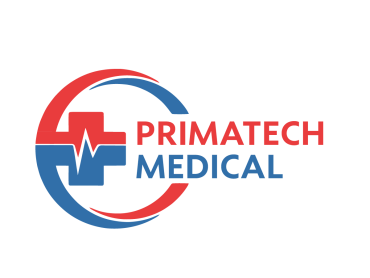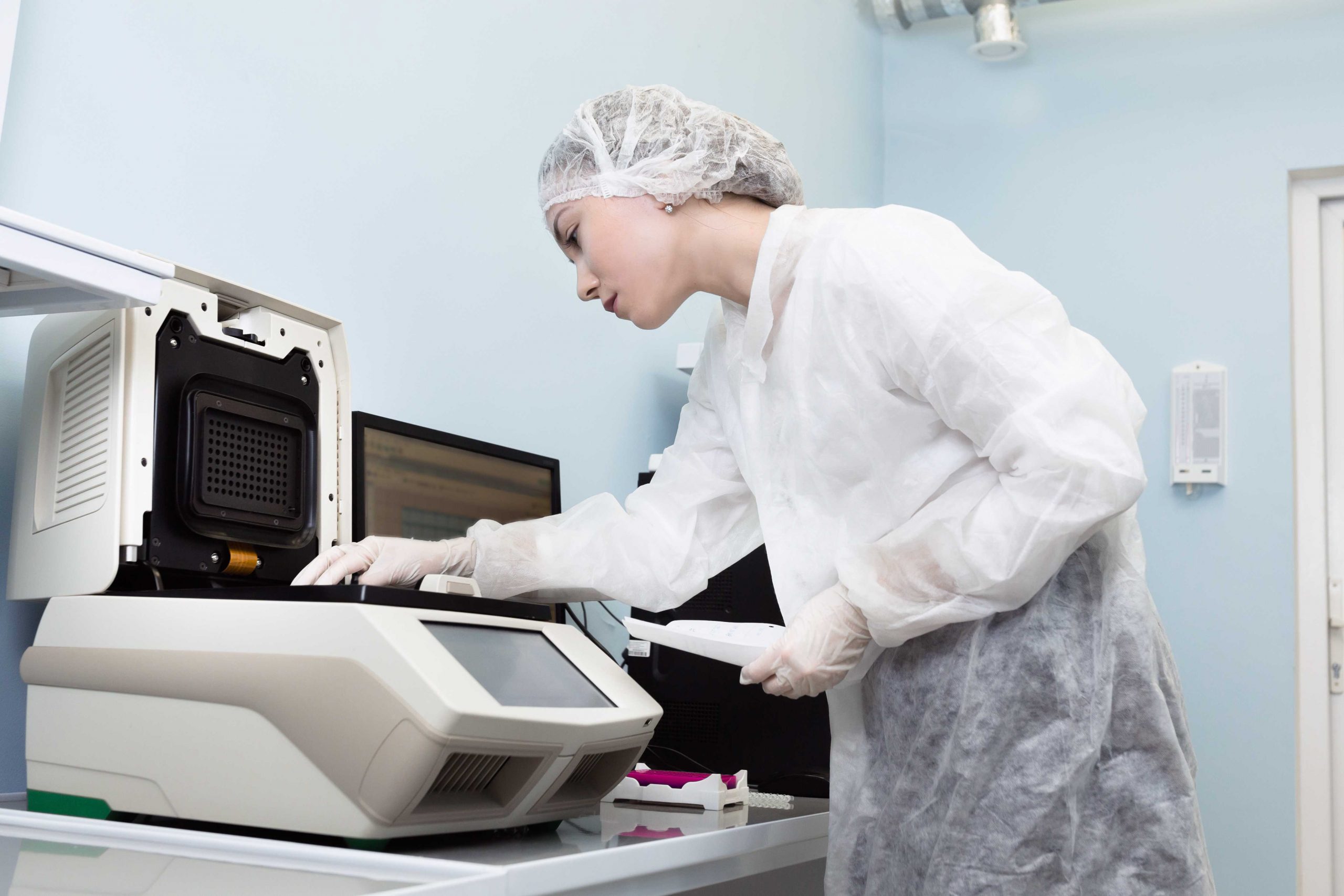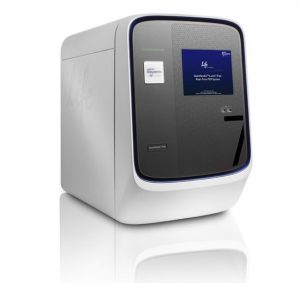Table of Contents
PCR machines are designed to amplify and detect DNA, the unit combines the function of a thermal cycler and a fluorimeter which facilitate the process of quantitative PCR.
What are RT PCR Machines and a PCR test??
The RT PCR Machines allow for identifying specific amplified DNA samples by using the analysis of their melting temperature. PCR is a test that is usually carried out to detect the presence of genetic material from a virus. The PCR test has been designed to detect the presence of a virus during a test. The tests also detect the presence of fragments of the virus even after the individual has healed after the infection.
Challenges of using the RT PCR Machines in Diagnosis of Covid 19
According to the National Library of Medicine, there is some controversy surrounding the real-time PCR tests, as there are risks of the tests eliciting false-negative and false-positive results. According to reports a couple of the suspected cases that exhibited typical clinical characteristics of Covid 19 and the identical specific computed tomography were not diagnosed.
Meaning that a negative result does not exclude the possibility of Covid 19 infection, which means that it should not be used as the sole criterion for treatment or for coming up with patient management decisions. There were, therefore, a few factors that were proposed and which should be associated with the inconsistency of real-time PCR.
It is common knowledge that the results derived from the real-time PCR using primers in different genes can be compromised by the variation of the viral RNA sequences. The false-negative results might therefore occur through mutations in the primer and the probe-target regions in the SARS-CoV-2 genome.
And even though it was attempted to create the real-time RT-PCR assay as precisely as possible but largely based on the conserved regions of the viral genomes. The variability that causes mismatches between the primers and probes, and the target sequences could potentially lead to a decrease in assay performance and potential false-negative results.
So, in light of the above, multiple target gene amplification is recommended to minimize the chances of invalid results. Most importantly is that there are several types of the SARS-CoV-2 real-time RT-PCR kit that have been developed and approved rapidly but all of which have different qualities. Notable, therefore, is that the sensitivity and the specificity of the real-time RT-PCR test is not 100%.
In reference to the natural history of Covid 19 and the viral load kinetics observed in different anatomic sites of the patients. The procedure commonly used for sampling has been established to contribute to false and negative results. In a study, it was reported that sputum was the most accurate sample for laboratory diagnosis of Covid-19 and which was followed by the nasal swabs. Notable is that the throat swabs were not approved for the diagnosis.
What’s more, is that it was suggested that the detection of viral RNAs in bronchoalveolar lavage fluid if the specialist needed to diagnose and monitor viruses in very severe cases. In other studies, it was indicated that the only way to obliterate inconsistent results was to use different specimen types such as stool and blood. Also, the extracted samples should be retrieved using the Dacron or polyester flocked swabs and be taken to the lab immediately.
What are The Differences between Rapid PCR vs. RT-PCR Covid Testing?

The PCR test has been designed to detect the availability of a virus’s genetic material or its fragments as it breaks down. Antigen test, on the other hand, is designed to detect particles of proteins on the surface of the virus referred to as antigens. Antigen tests are faster and would normally take between 15 and 30 minutes.
Individuals can also perform the rapid antigen tests which have been established to be more accurate only when used within a few days of the start of the Covid 19 symptoms. And which is normally the time when the body has the largest amount of viruses. The information consolidated above brings us to our next question, between the PCR and antigen test which one is more accurate?
Well, the antigen test has been established to be faster but it is definitely not as sensitive as the PCR test. Given the above, if an antigen test is negative then only a PCR test can be done to confirm the negative PCR test.
The difference between the Rapid PCR test and the RT-PCR Covid Testing is that the former has been designed to detect a new Covid infection through a nasal swab. And will efficiently take note of genetic material belonging to the Sars-Cov-2 virus. The Rapid PCR test produces results on the same day and can be carried out within the facility.
The RT PCR test on the other hand also goes by the name molecular test and is administered via a nasal swab and can also be administered through a throat or saliva swab. When compared to the Rapid PCR test, the RT PCR Covid testing is highly accurate and considered the stellar standard of Covid tests. The results from this test take longer and will not be available up until three business days have elapsed.
And once the samples have been extracted either through nasal, saliva, or, throat swab they are sent to the lab for processing.
How do RT PCR Machines work?
An RT PCR machine works by collecting data, as the PCR process takes place. The system has been designed in such a way that it combines amplification and detection in a single step. The above is made possible by utilizing different fluorescent chemistries that have been established to correlate PCR product concentration to fluorescent intensity.
The process of the real-time PCR to combine PCR amplification and detection in a single step gets rid of the need to detect viruses using gel electrophoresis. What’s more, is that it ensures that the method is truly quantitative. When using the real-time PCR systems the fluorescent dyes are normally used to label PCR viruses when thermal cycling is initiated.
The unit utilizes the fluorescence-detecting thermocyclers to amplify specific nucleic acid order and measures their concentration simultaneously.
How is the COVID-19 Virus Detected using RT PCR Machines?
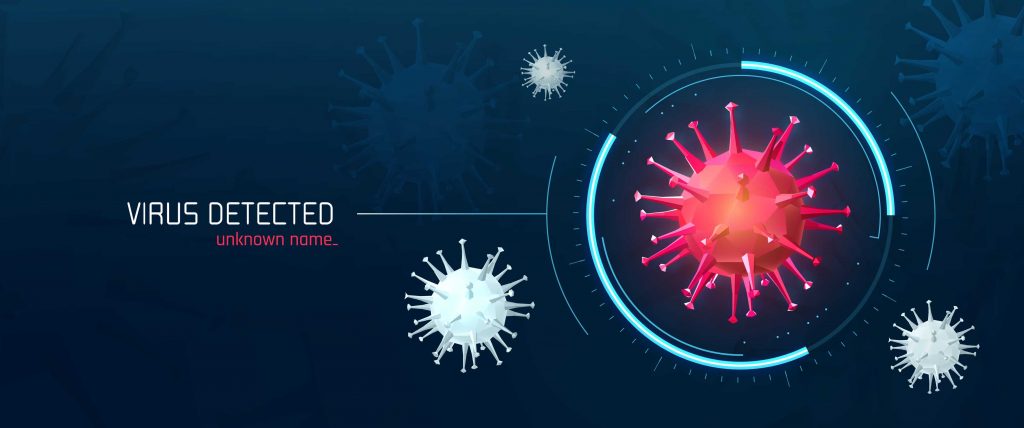
After the performance of the nasal or throat swab, a sample of the Covid 19 virus is extracted, it is then treated with various chemical solutions that help remove proteins and fats, and the process extracts only the RNA present in the sample. RNA is usually a mix of an individual’s own genetic material and the virus’s RNA but only if present.
And with a specific type of enzyme, RNA is reverse transcribed to DNA. The specialists will then add more short fragments of DNA that have been established to be complementary to specific parts of the transcribed viral DNA. During this process, the specialist will check for the presence of the virus in a sample, which is established when the fragments are detected on particular sections of the viral DNA.
Important to note is that a couple of the extra genetic fragments are normally used for building the DNA strands and that is during the amplification stage. Other genetic fragments are normally used for creating the DNA, and to add marker labels to the strand and which are later used to detect the virus.
The above mixture will then be placed in the RT PCR machine and the machine will then cycle through temperatures that heat and cool the mixture and which will trigger a specific chemical reaction necessary for creating new identical copies of the target sections of the viral DNA.
The above is not the end as the cycle is repeated over and over a feature that enables it to continue copying the target sections of the Viral DNA. Important to note is that each of the cycles conveniently doubles the previous number. Meaning that if there were two copies, then they would become four and the four copies would then become eight.
What you must, therefore, understand is that a standard Real-Time PCR setup will achieve up to 35 cycles. Meaning that by the time the process comes to a conclusion up to 35 billion new copies of the sections of viral DNA will have been created from each strand of the virus that is present in the sample. Notable is that while the new copies of the viral DNA parts are created, the labels attach to the DNA strands and then proceed to issue a fluorescent dye.
The fluorescent dye is usually measured by the machine’s computer and provided in real-time. The computer will then track the amount of fluorescence in the sample once each cycle has been completed. Most importantly is that when a certain level of fluorescence is exceeded it means that the virus is present.
Specialists have also been known to monitor the number of cycles that an individual will take to reach the relevant level. The above enables them to estimate the severity of the infection. If the cycles are therefore fewer, the more severe the viral infection is.
What is the advantage of a Real-Time PCR System?
A Real-Time PCR System has been established to be highly sensitive and specific and can, therefore, deliver a reliable diagnosis in as little as three hours. You will, however, notice that most laboratories might take up between six and eight hours.
And when compared to other virus isolation methods the PCR system works exceptionally faster and has a minimized potential for contamination or errors. Given that the whole process is usually carried out inside a closed tube. A real-time PCR system offers an accurate method of detecting the Covid 19 virus.
And given that the Covid 19 virus only stays in the body for a specific amount of time, the real-time PCR system cannot be relied upon to detect the previous infections. A procedure that could help medics understand the development and spread of the virus.
The advantage of using the Real-Time PCR systems is that they are closed tube systems thus do not require any post-PCR processing.
Viruses and Genetic Materials
From our discussion above we have explored the modalities of the RT PCR machines used in the diagnosis of Covid 19. We will now dig into the makeup of a virus so that you understand the differences between DNA and RNA. For starters, a virus is a microscopic package of genetic material effectively covered by a molecular envelope. The genetic material is usually a ribonucleic acid also referred to as RNA or a Deoxyribonucleic acid also referred to as DNA.
DNA can be described as a two-strand molecule available in all organisms including plants, animals, and viruses. DNA holds the genetic code, for how these organisms are made and how they develop. RNA, on the other hand, is a one-strand molecule that replicates various parts of the genetic code to proteins to synthesize and carry out functions that keep organisms alive and developing. Important to note is that there are different variations of RNA that copy, transcribe and transmit.
So some of the viruses the likes of the SARS CoV 2 coronavirus responsible for causing Covid 19 have been determined to only contain RNA. The above then means that the Covid 9 virus relies on infiltrating the healthy cells so that they can survive. Private medical practices or clinic Surviving During the Coronavirus Pandemic.
The moment the virus manages to penetrate the body cells it uses its own genetic code, “ the RNA” to take over the cells, it will then control and reprogram the cells consequently turning them into virus-making factories.
Now here is where the RT PCR machines come in, for the Covid 19 virus to be discovered early in the body using real-time RT-PCR, the specialists have to convert RNA to DNA. The above process is known as Reverse Transcription and is done because only DNA can be replicated.
The next big question is why scientists amplify DNA.
A specific part of the transcribed viral DNA has amplified hundreds of thousands of times, which provides them with a large enough quantity of the target sections of the viral DNA which aids in confirming that the virus is actually present.
Which are the best RT PCR Machines?
The best PCR system is the Rotor-Gene Q-Pure detection real-time PCR system because it is future-proof and designed to offer outstanding performance. The units come complete with a wide optical range and flexible formats.
Here are the Top 10 RT PCR Machines in the diagnosis of COVID-19 in 2022
1.Quantstudio-7 ($14,700.00)
Quantstudio-7 multiplexing capabilities and interchangeable block formats enable it to carry out a breadth of real-time PCR-based applications. The unit’s configuration is sufficient to account for the simple workflow processes and Quantstudio 7 automation capabilities.
Each of the components of the PCR system has been designed to increase productivity by enhancing user experience. What’s more is that the incorporated software is super intuitive, coupled with an easy-to-use interface. Quantstudio 7 is also highly reliable when it comes to reproducibility, thanks to its flex system.
The block exchange process is carried out seamlessly and does not require any tools. Quantstudio 7 is characteristic of an intelligently designed platform, which is additionally compatible with more than 8 million Taqman ® assays. The latter is used for gene expression, Protein expression experiments, gene regulation, and genetic variation.
Pros
- Allows the processing of hundreds of real-time PCR reactions using the Taqman® Array 384-well microfluidic cards.
- The Quantstudio 7 flex system helps maximize throughput capabilities
- Users can expect to be supplied with accurate results thanks to the Optiflex system
Cons
- Highly depended on the power
- It does not encourage a hands-free operation
2. Quantstudio-6 ($10,700.00)
There is no need to break the bank when you can plan for the experiments today and grow with tomorrow’s needs. Quantstudio 6 flex PCR system will suffice for a concurrent PCR-based application given that it comes complete with an extensible block section.
The unit is characteristic of a simplified workflow; the responsive touch screen allows for seamless interaction. And with the easy-to-use software, the Quantstudio 6 is well capable of offering reliable reproducibility at a pocket-friendly price.
When using Quantstudio 6, you can expect to be provided with accurate results. The above has been enabled by the enhanced well to well and instrument to instrument data accuracy. The above has been made possible with the incorporation of the Optiflex system which is characteristic of 5 coupled excitations and the emission filter channels.
And if you feel that the services offered by the Quantstudio 6 flex real-time PCR system are minimized, you can upgrade the unit to a Quantstudio 7 flex system to equip it with additional automation capabilities and encourage throughput and multiplexing capabilities.
Pros
- Retails at a lower price
- The instrument is reliable and accurate
- Equipped with easy to use software
- The incorporated touch screen makes operations a breeze
Cons
- Initial use involves a steep learning curve
- Must be connected to an external device
3. Quantstudio 12k Flex ($11,099.00)

Quantstudio-12k flex systems are the perfect equipment to help drive your productivity, and all you have to do is equip it with a 9700 thermal cycler, an open array block, and the QuantStudio 12K Flex, among others.
The Quantstudio-12k-Flex will then be capable of producing at least over 100,000 data points, or even more in 8 hours every single day.
Quantstudio-12k is an effective PCR system best for use in the diagnosis of covid 19, given that its throughput can be maximized with the incorporation of a few resources. For example, if you run a 4 applied for Biosystems™ OpenArray™ plates in a single run on the Quantstudio 12K system, you will be able to increase your throughput up to 32 fold.
The real-time PCR system is additionally scalable, giving you the option of choosing between the five interchangeable blocks and loading the thermal cycling that is relevant for the pending experiment. What’s more, you can enhance the accuracy and sensitivity of the nucleic acid experiment. All you have to do is alternate between the two PCR modes, using the Quant studio digital PCR kits and the Suite software and the Quant studio Open array block.
The incorporated PCR technology enables the unit to detect rare targets more, especially in cancer mutations, GMO detection, and viruses. Quantstudio 12K-flex enables real-time monitoring and allows you to monitor up to 15 instruments concurrently and access the amplification plots or the multi-component data from the subarrays.
Pros
- The unit is scalable for tomorrow’s needs.
- The real-time PCR system is compatible with diverse applications
- It offers a good balance of throughput, speed, and data analysis capabilities
- Features the user friendly Quantstudio 12K software
Cons
- Prone to software issues
- Disk clean-up and defragmentation must be done monthly.
4. Bio-Rad Cfx96 ($12,990.00)

Bio-Rad-Dfx96 real-time PCR system is highly effective given its construction that is characteristic of two components: the Optical reaction module that is characteristic of an optical system used to collect fluorescent data and comes complete with a thermal cycler block.
The second component is the C1000™ thermal cycler base that has incorporated a user interface used purposely to control the system operating in the independent model. The power ports and buttons have been conveniently situated at the back panel to help in powering the computer.
Setting up the Bio-Rad-CFx96 is a breeze thanks to the factory-calibrated optics. Once operational, the unit allows minimized sample and reagent use for up to 5 target multiplexing with the sample volume being as low as 10 µl. And for effective functioning, the inner lid of the plate has been designed to retain temperature on the top of the consumable, which helps prevent sample evaporation.
It is important to note that the heater plate’s inner lid should not be touched, as it might get contaminated. The unit ensures accurate data analysis because it uses advanced tools. The latter normalizes gene expression through the use of the CFX Maestro software.
What’s more is that the system can be configured to fit the needs of a particular user, to which end they can run the unit without a computer. And run approximately up to 4 systems from a single computer, or better yet, integrate it with the CFX automation system II.
Pros
- The flexible CFX system configurations help meet the user’s throughput needs.
- The incorporated CFX Maestro software is known to work easily with prime PCR assays and panels.
- The Bio-Rad-Cfx96 incorporated touch system is highly responsive, precise, and powerful.
- The unit set up is fast, runs, and monitors the amplification traces in real-time via the integrated LCD touchscreen.
Cons
- Bio-Rad CFX 96 is highly-priced
- The cheaper version of the Bio-Rad CFX 96 doesn’t come with colors and a screen on the machine.
5. Applied Biosystems 7500 ($9,099.00)
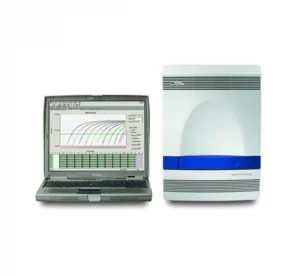
The Applied Biosystems -7500 real-time PCR system has been configured to afford higher performance by using multi-color PCR while conducting different kinds of research. Among the unit’s best features is the 7500 software that has incorporated a help system that describes how to use the features equipped in the user interface.
The real-time PCR system uses fluorescence PCR reagents that help with the quantitative detection of nucleic acids. Important to note is that the run-type not-withstanding, a data collection point on the Applied-Biosystems-7500 real-time PCR, is characteristic of up to three phases.
Therefore, the first Excitation phase enables the instrument to illuminate all the wells of the reaction plate and which in the process excites the fluorophores in each reaction. The second Emission phase enables the instrument’s optics to collect the residual fluorescence emitted from the reaction plate’s wells.
The last collection phase allows the instrument to assemble a digital representation of the residual fluorescence normally collected over a fixed timeline. And will store the raw fluorescence image for analysis.
Pros
- Delivers high-quality results in less than 30 minutes
- Offers high resolution melting analysis
- The compute hard drive can be freed by using the data compression utility
Cons
- The Peltier-based heating block is not interchangeable with the normal ABI 7500 heating block known to use 20-100ul volumes.
6. Quantstudio-5 ($9,199.00)

The Quanstudio- 5 features a simplified design that makes it usable by both the experts and the new users; the system will suffice for users looking for the perfect balance between performance and quality. The future-proof real-time PCR system has been essential in preparing laboratories for future quantification technologies.
Quantstudio-5 will occupy a small space in your office, thanks to its design that maximizes the horizontal and vertical bench space. The interactive touch screen allows the user to view the amplification plots; even better is that the interface is super intuitive and easy to use.
The unit is highly reliable and doesn’t need frequent maintenance. You have been provided with up to 10GB onboard memory for storage purposes and can, therefore, store between 2,000-5000 runs. Talking about innovation and relevancy, Quantstudio 5 real-time PCR system offers enhanced multiplexing capabilities for up to six dyes, enabling future quantification technology.
Pros
- Usability has been enhanced through the use of the USB interface
- Temperature control is enabled through the pettier controlled blocks
- The unit is equipped with the latest real-time software
- Best unit for labs that project future advancements in forensics
Cons
- Connectivity problems with thermos fisher cloud account
7. Quantstudio 3 ($7,999.00)
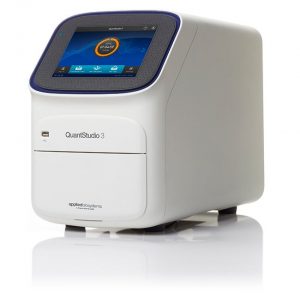
If you search for a PCR system that does not compromise on performance and quality and is equally affordable and easy to use, then the Quantstudio-3 real-time PCR system is the perfect unit. Quantstudio 5 features a simplified design complete with easy-to-use analysis software to make it usable by both novice users and experts.
Data can be accessed at any time and from different locations, but only when connected to the Thermo Fisher Cloud. The incorporated improved technology enables enhanced data accuracy and sensitivity for a wide range of genomic applications.
The Thermo Fisher cloud feature provides scientists with a safe place to store, analyze, and share data. Users can, therefore, upload their data from anywhere or from the instrument for as long as they have a reliable connection to the web. Quantstudio 3 real-time PCR system is compact and comes factory calibrated, enabling seamless installation and immediate use.
The construction is meant to afford users easy interaction, to which end the real-time PCR system sports an interactive touchscreen and simplified instrument software.
Pros
- Users can safely secure their data, where ever they are
- The software has been streamlined for improved usability
- It does not require a license to purchase
- It does not require software installation or versions update before use
Cons
- Highly-priced
- Connectivity issues with Fisher cloud account
8. Roche LightCycler 480 II ($8,599.00 )
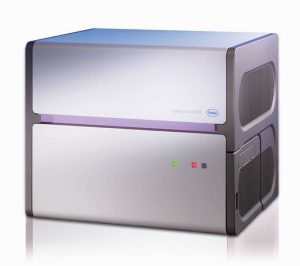
Roche light cycler 480 has been configured to meet the needs of a wider range of scientific applications. The above will, therefore, cover SNP analysis, array validation, and gene knockdown studies. Sporting the best innovative hardware and software, the modular online PCR device enables qualitative or quantitative nucleic acid detection, mutation analysis, and genotyping.
What’s more, is that the Roche-Lightcycler-480 real-time PCR system will provide enhanced throughput and multiplexing capabilities? Roche light cycler 480 is among the industry-leading real-time PCR systems that will offer maximal sensitivity for any assay format in all the channels. The light cycler has been designed for use by many and different assay formats.
Under the high-performance optical systems, users can freely combine the built-in filters to make good use of the real-time PCR system’s multiplexing and multicolor capabilities. The Roche light cycler 480 additionally allows individuals to customize their systems to their specific needs by adding advanced analysis modules as needed.
Pros
- It uses a variety of probe formats.
- Users can extract meaningful results through the enhanced data analysis methods.
- Individuals are better placed to obtain fast, susceptible, and reproducible data.
- Users can easily switch between the plate formats and the thermal block cyclers in a short time.
Cons
- Could develop errors if not properly used
9. Agilent Stratagene Mx3005p ($4,800.00)

The Mx3005p is known to offer robust PCR performance when used with different but relevant applications. The unit offers an intuitive and highly efficient operation to ensure that your laboratory builds a reputation of consistent workflow and provides timely results.
The troubleshooting process is pretty simple; the same goes for maintenance and calibration requirements. Additionally, the real-time PCR system has incorporated various tools and calculators for use with the PCR and qPCR and which helps to simplify workflow.
The Mx3005P real-time PCR system has been established to advance the already proven Mx3000P system and, therefore, offers unmatched capability and flexibility. Agilent Mx30005P has also been configured to support more real-time QPCR applications and chemistries to cater to all the research needs of the lab that are being run currently and the ones that will be run in the future.
Pros
- Equipped with an intuitive interface
- Generates reports easily
- Accurately analyses data
- The unit is flexible and offers high performance at a low cost
Cons
- Installation is difficult and takes some time
- Using the real-time PCR system involves a steep learning curve.
10. Rotor-Gene Q 5plex ($9,799.00)

The Rotor-Gene Q 5plex comes equipped with many features, which are highly beneficial to the institution or lab using the unit. Users can expect to be furnished with the best thermal and optical presentation thanks to the rotary format, for starters. The real-time PCR system offers the best analyses and is supported by the incorporated user-friendly software.
From the outside, you can tell the Rotor-Gene Q 5plex has incorporated a robust design necessary for maximum convenience and low maintenance. Combining the Roto-Gene Q with the optimized QIAGEN kits helps address the relevant real-time PCR and high resolution melting applications, including pathogen detection, Gene scanning, Genotyping, and Gene expression analysis.
The unique rotary design accounts for outstanding performance, and you should expect uniform detection, which eliminates the need for the ROX reference dye.
Pros
- The optical range facilitates multiple applications
- The multiple PCR tube formats help cater to varied needs
- Users can expand their research with the HRM
- The incorporated software enhances data security.
Cons
- Probe integrity problem
- PCR master mix performance errors
Conclusion
When it comes to getting the right real-time PCR system for your lab or institution, it all boils down to your budget and the scope of your research. Some of the PCR systems discussed in this article are advanced, scalable, and flexible. However, a few units will suffice for a small lab and can effectively diagnose Covid 19.
While the RT PCR machines used in the diagnosis of Covid 19 have been established to produce the most accurate results. False and negative results will likely occur because of the presence of amplification restrictors present in the sample, or few organisms due to inappropriate collection, handling, and transportation of the sample. The CDC has also created a SARS CoV Real-Time RT PCR Diagnostic panel that helps minimize the chances of false-positive results.
